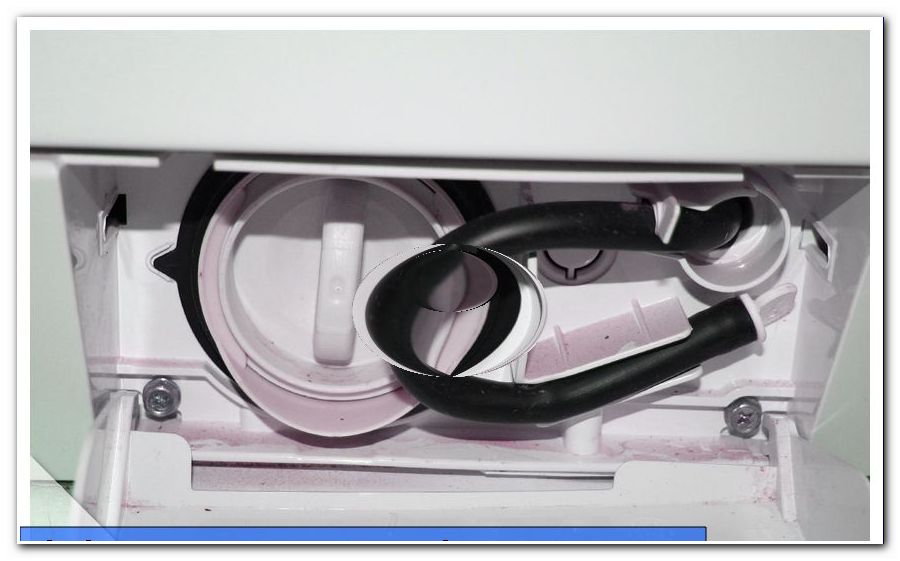All parapet heights for windows, balcony and railings / handrails

- Parapet height depending on the structure
- Optimum safety
- Parapet heights for windows and skylights
- example
- No rule without exception
- Parapet height in balconies
- differences
- Parapet heights for stairs and railings
The parapet is an impenetrable barrier that serves as fall protection in building openings. A parapet is designed so that slipping is impossible and they also catch a hard impact safely. To regulate the function of a parapet, its height is specified in various standards and regulations. This creates the same security in every building. Here you will learn everything about the required parapet heights for windows, balconies and railings.
Parapet height depending on the structure
How high a balustrade must be depends on the particular structure. Different rules apply to windows than to balconies, but to stairs other than skylights. In addition, although there is a nationwide minimum height for balustrades, but this regulation can be tightened by land regulations. In addition, local building codes may further prescribe the height and design of parapets.
Optimum safety
The height of a balustrade on a balcony, window or staircase is a crucial factor for safety in a building. It is therefore in the vital interest of the client to allow only absolutely correct results here. For specific questions, the local building authority also provides detailed information.
Parapet heights for windows and skylights
The parapet height for windows is specified in DIN 5034-4 " Tageslicht ". The information can be found in point 3.6 and following.
For windows, it depends on how high the window is positioned above the ground. The technical term for this is the "fall height ". The nationwide minimum required is 80 cm with a fall height of up to 12 meters. From a fall height of 12 meters 90 cm parapet height are prescribed. The reference point is the highest point of the finished floor from the window. 
For skylights, the height of the parapet is difficult. The reason for this is the sloping roof, which lets the window protrude into the walk-in room. For the exact calculation of parapet height and window size, the roof slope and window length must therefore be taken into account.
example
A roof window (not a dormer window, but a mounted on the rafters swing-tilt window) has a length of 120 cm. The building regulations specify a parapet height for skylights of 90 cm. At an angle of the roof pitch of 45 °, the top edge of the roof window is exactly 175 cm high. Tall people from 1.90 meters height beats the top so in front of the forehead. In order for the window to be accessible, the height of the parapet must be increased to 115 cm. Thus, the upper edge of the roof window is raised to 200 cm and the space is usable without danger.
No rule without exception
In particular, in houses with a loft attic roof windows are often provided as escape and rescue route. For this purpose, both the size of the skylights and the height of the parapet are subject to regulations. As a rule, the maximum parapet height for escape and rescue routes, depending on the federal state, is between 110 and 120 cm. In the example given, the parapet height, if the house is in the "wrong" state and it should serve as an escape route, may already be too high. In addition, here is the distance to the "light eaves". This is the front edge of the roof. Here is a largely uniform maximum dimension of 100 cm.
This ensures that between the point of application of the fire ladder and the roof window, the distance is not too large. The window itself must be at least 90 x 110 cm in size as an escape door. In the example given, the 45 ° roof pitch may require a lot of exact calculations until a valid roof window is found. Precise planning in advance is therefore essential. This also means that the height of the floor is also known exactly to the roofer or carpenter. A subsequently installed underfloor heating can therefore already violate the building regulations in terms of parapet height.
Parapet height in balconies
A balcony is in the building language as "accessible area". This can also be terraces, galleries, protrusions or even flat roofs, which should allow extended use. As soon as an area is accessible to everyone without aids, it must be equipped with a fall protection. The building codes indicate here a maximum difference in the level of 50 cm. From a half meter difference in height a parapet is mandatory. In practice, however, the installation of a parapet at 30 cm makes sense, as even falls from this height can have dire consequences. 
Especially with balcony balustrades there are great differences in the state ordinances of the federal states
As an alternative to the "parapet", technical language also speaks of "defenses". The usual measure, which has a largely nationwide validity, is for parapets at balconies 90 cm . Above 12 meters, an additional 20 cm is required so that the minimum height of a parapet is 1.10 m .
differences
In Baden-Württemberg, a very massive architectural style prevails. This is reflected, inter alia, in an adapted provision on the height of the parapet. It suffice in BaWü already 80 cm parapet height, provided that the parapet itself has a depth of 20 cm. Simple parapets made of wood, steel or glass are excluded. However, if used or masonry parapets are used, the height can be reduced. However, if such a parapet is planned, a study of the local building regulations is indicated. Not every community wants houses with a distinctive "castle character", as evoked by massive parapets of this kind.
In Bavaria, the permissible height of the balustrade for balconies depends on how the building is used. Residential buildings needs a parapet height of 90 cm up to a height of 12 meters. At workplaces here are already 100 cm prescribed in the building code. Above a drop of 12 meters, both residential and commercial buildings use a standard 120 centimeters as parapets for balconies and terraces. This massive barrier against falling can be counteracted with the use of glass elements. So you have the full security, without losing in living comfort. However, the use of glass elements must be approved in local building codes.
Parapet heights for stairs and railings
The height of parapets is regulated in stairs and railings in DIN 18065 . Staircase parapets and their railings with the associated handrails are of particular importance in terms of construction safety. In addition to the normal, safe entry of these components, a stable parapet with fixed handrail also serves as a catch protection. Should you ever stumble, a courageous grip to the handrail can save you from worse. In factories, during every safety training, it is recommended to use the handrail automatically each time the staircase is entered, sometimes even called upon.

The balustrade heights on stairs are comparable to those on balconies. In dwellings are 90 cm, at work 100 cm as a minimum. The handrail is mounted on the staircase parapet. It must be mounted at a height of 80 to 120 cm. However, the smaller dimension applies only to stairs where no additional balustrade is required, for example in basement stairs. In these, the adjacent walls already form the fall protection to the side. Nevertheless, they need a handrail.
The handrail must have a grip width of 45 to 60 millimeters. Wooden handrails require a minimum handle width of 45 millimeters.
Especially in older apartment buildings, the design and height of the handrail often no longer meet the building codes. In these cases, an additional handrail can be mounted to restore the required operational safety. Local craftsmen offer practical and optically acceptable solutions.




